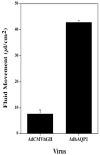Clinical management of salivary gland hypofunction and xerostomia in head-and-neck cancer patients: successes and barriers
- PMID: 20970030
- PMCID: PMC2964345
- DOI: 10.1016/j.ijrobp.2010.06.052
Clinical management of salivary gland hypofunction and xerostomia in head-and-neck cancer patients: successes and barriers
Abstract
The most significant long-term complication of radiotherapy in the head-and-neck region is hyposalivation and its related complaints, particularily xerostomia. This review addresses the pathophysiology underlying irradiation damage to salivary gland tissue, the consequences of radiation injury, and issues contributing to the clinical management of salivary gland hypofunction and xerostomia. These include ways to (1) prevent or minimize radiation injury of salivary gland tissue, (2) manage radiation-induced hyposalivation and xerostomia, and (3) restore the function of salivary gland tissue damaged by radiotherapy.
Copyright © 2010 Elsevier Inc. All rights reserved.
Conflict of interest statement
No other conflicts are declared by any of the authors.
Figures





References
-
- Burlage FR, Coppes RP, Meertens H, Stokman MA, Vissink A. Parotid and submandibular/sublingual flow during high dose radiotherapy. Radiother Oncol. 2001;61:271–274. - PubMed
-
- Vissink A, Jansma J, Spijkervet FKL, et al. Oral sequelae of head and neck radiotherapy. Crit Rev Oral Biol Med. 2003;14:199–212. - PubMed
-
- Jellema AP, Slotman BJ, Doornaert P, et al. Impact of radiation-induced xerostomia on quality of life after primary radiotherapy among patients with head and neck cancer. Int J Radiat Oncol Biol Phys. 2007;69:751–760. - PubMed
-
- Langendijk JA, Doornaert P, Verdonck-de L, et al. Impact of late treatment-related toxicity on quality of life among patients with head and neck cancer treated with radiotherapy. J Clin Oncol. 2008;26:3770–3776. - PubMed
-
- Jensen SB, Pedersen AM, Reibel J, et al. Xerostomia and hypofunction of the salivary glands in cancer therapy. Support Care Cancer. 2003;11:207–225. - PubMed
Publication types
MeSH terms
Substances
Grants and funding
LinkOut - more resources
Full Text Sources
Medical

